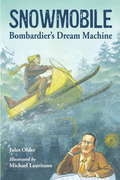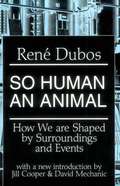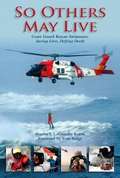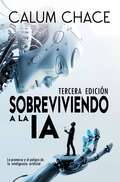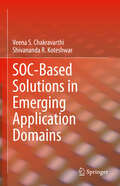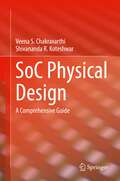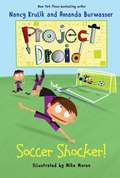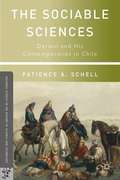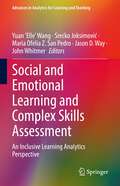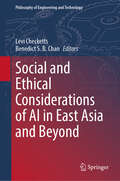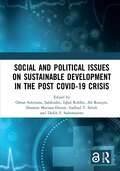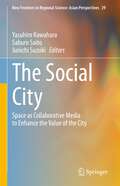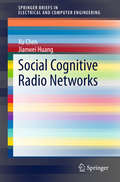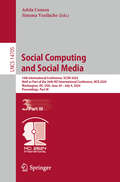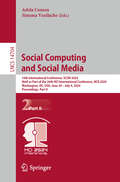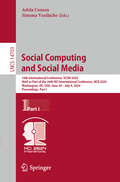- Table View
- List View
SNOWMOBILE: Bombardier's Dream Machine
by Jules OlderIn 1922, when Joseph-Armand Bombardier was fifteen years old he built his first snow vehicle. He had always loved to tinker with motors and make things go, and he dreamed of building a vehicle that could go over snow. His first attempt, using a Model T Ford engine and a wooden propeller, worked well. To Joseph-Armand’s mind, anyhow. Not so much his father, who made him take the contraption apart. Over the years, Joseph-Armand dreamed of becoming a great mechanic and inventing machines. But when his young son died of a fever because it was impossible to get to the hospital over the snow-covered roads, Joseph-Armand applied his single-minded determination to building a vehicle that could go over snow. It took years, but he accomplished his goal. His invention changed the way people in snow country lived. Inaccessible roads could now be travelled, taking patients to hospitals, doctors and priests to the needy, children to school, and even mail to residents.
So funktioniert Mediation im Planen + Bauen: Praxis der Konfliktbearbeitung ohne Gericht
by Peter Hammacher Ilse Erzigkeit Sebastian SageKonfliktbegleitung und Konfliktlösung im Planen und Bauen außerhalb der Gerichte ist erfolgreich und notwendig. Das Buch zeigt die Voraussetzungen und Wirkungsweise der Mediation anhand vieler Praxisbeispiele aus dem öffentlichen und privaten Baurecht. Auch andere Alternativen der außergerichtlichen Konfliktlösung werden vorgestellt, etwa die Experten-Schlichtung, Adjudikation, VOB/B-Stelle, Schiedsverfahren zwischen Baubeteiligten und Mediation, Moderation und Bürgerbeteiligung im öffentlichen Bereich. Die Konfliktlösung durch die Gerichte, einschließlich Güterichter und einstweiliger Verfügung werden ebenfalls einbezogen. Der Leser findet umfassende Erläuterungen, aber auch Interviews, Dialoge und Fallstudien zu unterschiedlichsten Themen rund um das Planen und Bauen.
So funktioniert Mediation im Planen + Bauen: Mit Fallbeispielen und Checklisten
by Peter Hammacher Ilse Erzigkeit Sebastian SageKonfliktbegleitung und Konfliktlösung im Planen und Bauen außerhalb der Gerichte ist erfolgreich und notwendig. Das Buch zeigt die Voraussetzungen und Wirkungsweise der Mediation anhand vieler Praxisbeispiele aus dem öffentlichen und privaten Baurecht. Alternativen der außergerichtlichen Konfliktlösung werden vorgestellt, etwa die Experten-Schlichtung oder die Adjudikation zwischen Baubeteiligten und - ganz aktuell - die Bürgerbeteiligung bei öffentlichen Vorhaben.Der Leser findet umfassende Erläuterungen, aber auch Interviews, Dialoge und Fallstudien zu unterschiedlichsten Themen rund um das Planen und Bauen.
So Human an Animal: How We Are Shaped by Surroundings and Events
by René DubosIn this collection of stories, the bizarre is rendered normal, the absurd hilarious and the incredible comprehensible. The re-imaginations of reality feature evocations of historical figures, over-televised game show hosts and late-night comedians.<P><P> Pulitzer Prize Winner
So Others May Live: Saving Lives, Defying Death
by Martha J. Laguardia-KotiteSo Others May Live is the untold story of the U.S. Coast Guard rescue swimmer. In startlingly clear and exceptional writing, it tells twelve heroic stories of the greatest maritime rescues attempted since the program was started in 1985. These feats, told through the eyes of the hero, reveal an understanding of how and why the rescuer, with flight crew assistance, risks his or her own life to reach out to save a stranger. The book covers diverse environments: oceans, hurricanes, oil rigs, caves, sinking vessels, floods, and even Niagara Falls. It is truly a can't-put-it-down collection.
So Over Sharing
by Elissa Brent WeissmanIn this timely contemporary middle grade novel from award-winning author Elissa Brent Weissman, two girls find their private struggles against their influencer mothers going very publicQuiet, introverted Hadley and rough-around-the-edges Willow have one big main thing in common: both their moms have gained a huge online following sharing every detail of their lives. Hadley&’s mom—Phoebe of @PhoebeAndJay fame—loves to share all the terrible, down and dirty bits about raising kids while Willow&’s mom Rosalind at the up-and-coming @MoonbeamsAndMarigold basks in the glow of motherhood. If getting all her life's moments (including an almost decade old viral potty training video) shared online isn't enough, Hadley&’s starting a new school in a new neighborhood and desperately trying to keep her mom&’s identity a secret while Willow is struggling with a recent life-changing announcement from her mom who, it turns out, is not getting out of the influencer world anytime soon. As the two girls build a friendship on a private Instagram page and share the pains of having a momfluencers, they come up against the same question—how long will they have to share their lives with everyone?
So Social
by Amy Guth Scott KleinbergSo Social is a collection of Chicago Tribune articles written by social media experts Amy Guth and Scott Kleinberg. It explores the benefits and dangers of social media from both professional and personal standpoints. For anyone interested in growing their social media following, understanding web marketing, or keeping accounts secure, So Social is a must read. In So Social, Guth and Kleinberg give insider tips on how to use social media safely and easily for business and at home. Entrepreneurs and media mavens alike will appreciate their useful insights on Facebook, Twitter, Instagram, Vine, LinkedIn, Google+, Pinterest, and more. Each platform has a dedicated chapter, which is beneficial to both social novices and media experts. The Internet is awash with advice and lists of varying quality on improving social media habits. So Social has set itself apart by being a carefully curated collection from two tech gurus with experience across media platforms, from traditional "old-world" publishing to disruptive new media technologies. A quick yet highly informative read, So Social will be a crucial tool for any reader looking to improve their social media approach.
So viel Mathe muss sein!: Gut vorbereitet in ein WiMINT-Studium
by Klaus Dürrschnabel Rolf Dürr Wolfgang Erben Matthias Gercken Karin Lunde Torsten Schatz Rita Wurth Marc ZimmermannMithilfe dieses Arbeitsbuches können sich Studieninteressierte auf die mathematischen Herausforderungen in einem WiMINT-Studium vorbereiten. Kurze, verständlich formulierte Texte frischen Schulwissen wie logisches Begründen, Bruchrechnen, Differentialrechnung oder lineare Gleichungssysteme wieder auf. Hierbei helfen eine Vielzahl an Beispielen und Aufgaben mit Lösungen sowie Selbsttests am Anfang jedes Kapitels, mögliche Stolperfallen schon frühzeitig zu identifizieren. Thematisch orientiert sich das Arbeitsbuch am sogenannten cosh-Mindestanforderungskatalog, welcher von Lehrenden aus Schule und Hochschule gemeinsam entwickelt wurde. Dieser hält nach übereinstimmender Meinung vieler deutscher Hochschulen, Dachverbände und Hochschullehrenden das für ein WiMINT-Studium notwendige mathematische Vorwissen fest. Neben allgemeinen mathematischen Kompetenzen werden elementare Algebra, Geometrie, Analysis, lineare Algebra und analytische Geometrie sowie Stochastik abgedeckt.
So, You Have to Write a Literature Review: A Guided Workbook for Engineers (IEEE PCS Professional Engineering Communication Series)
by Catherine Berdanier Joshua LenartIs a literature review looming in your future? Are you procrastinating on writing a literature review at this very moment? If so, this is the book for you. Writing often causes trepidation and procrastination for engineering students—issues that compound while writing a literature review, a type of academic writing most engineers are never formally taught. Consider this workbook as a "couch-to-5k" program for engineering writers rather than runners: if you complete the activities in this book from beginning to end, you will have a literature review draft ready for revision and content editing by your research advisor. So, You Have to Write a Literature Review presents a dynamic and practical method in which engineering students—typically late-career undergraduates or graduate students—can learn to write literature reviews, and translate genre-based writing instruction into easy-to-follow, bite-sized activities and content. Written in a refreshingly conversational style while acknowledging that writing is quite difficult, Catherine Berdanier and Joshua Lenart leverage their unique disciplinary backgrounds with decades of experience teaching academic engineering writing in this user-friendly workbook.
So You Want to Be an Inventor?
by Judith St. GeorgeA spirited and witty look at history that focuses on the inventors and inventions who have given us lightbulbs, automobiles, and all the other things that keep the world humming.
Sobreviviendo a la IA: La promesa y el peligro de la Inteligencia Artificial
by Calum ChaceEste es el siglo de las dos singularidades: la singularidad económica (desempleo tecnológico) y la singularidad tecnológica (la explosión de la inteligencia). Ambas presentan enormes oportunidades y enormes desafíos. Si las manejamos con éxito, nuestro futuro como especie será más que maravilloso. Si fallamos, podría ser miserable, y quizás breve. El impulsor es la inteligencia artificial (IA), la tecnología más poderosa de la humanidad. El software que resuelve problemas y convierte los datos en valiosa información ya ha revolucionado nuestras vidas, y la revolución se está acelerando. En 2015, la inteligencia artificial ocupaba las primeras planas, y con justa razón. Se está acercando a un punto de inflexión en el que las máquinas pueden realizar mejor que nosotros muchas tareas que antes se consideraban exclusivamente humanas. Los sistemas de aprendizaje profundo están a punto de reconocer imágenes y comprender el lenguaje natural mejor que los humanos. El argumento de este libro es que debemos monitorear los cambios que están ocurriendo y adoptar políticas que fomenten los mejores resultados posibles. La gama de posibles resultados es amplia, desde los terribles hasta los maravillosos, y no están predeterminados. Serán seleccionados en parte por suerte, en parte por su propia lógica interna, pero en parte también por las políticas adoptadas en todos los niveles de la sociedad. La automatización y la superinteligencia son los dos desarrollos que ya podemos prever causarán grandes impactos. La automatización podría conducir a una singularidad económica y la evolución a un tipo de economía completamente diferente. Si nos equivocamos, una élite podría poseer los medios de producción y reprimir al resto de nosotros en un autoritario régimen tecnológico distópico. Si lo hacemos bien, podríamos disfrutar de una economía de abundancia radical, donde nadie tiene que trabajar para ganarse la vida, y todos somos libres para divert
SOC-Based Solutions in Emerging Application Domains
by Veena S. Chakravarthi Shivananda R. KoteshwarWorking in the ever-evolving field of smart chip design within an AI-powered design environment, the authors of this book draw on their experiences in successfully developing system-on-chip (SoC) solutions, having grappled with the emerging design environment, innovative tools, domain-specific challenges, and major design decisions for SOC-based solutions. They present the first comprehensive guide to navigating the technical challenges of SOC-based solutions in emerging application domains, covering various design and development methodologies for system-on-chip solutions for emerging target applications. When diligently applied, the strategies and tactics presented can significantly shorten development timelines, help avoid common pitfalls, and improve the odds of success, especially in AI-powered smart EDA environments. The book provides a detailed insight into SoC-based solutions for various applications, including artificial intelligence (AI), post-quantum security feature enhancements, 3D SOCs, quantum SOCs, photonic SOCs, and SOC solutions for IoT, high-performance computing SOCs, and processor-based systems. The coverage includes architecture exploration methods for targeted applications, compute-intensive SoCs, lightweight SoCs for IOT applications, advanced technology node solutions, and solutions including hardware software co-designs and software-defined SoCs. The strategies best applied in these highly advanced technology developments are discussed in a guest chapter by a practicing high technology strategist so innovators, designers, entrepreneurs, product managers, investors, and executives may properly prepare their companies to succeed.
SoC Physical Design: A Comprehensive Guide
by Veena S. Chakravarthi Shivananda R. KoteshwarSoC Physical Design is a comprehensive practical guide for VLSI designers that thoroughly examines and explains the practical physical design flow of system on chip (SoC). The book covers the rationale behind making design decisions on power, performance, and area (PPA) goals for SoC and explains the required design environment algorithms, design flows, constraints, handoff procedures, and design infrastructure requirements in achieving them. The book reveals challenges likely to be faced at each design process and ways to address them in practical design environments. Advanced topics on 3D ICs, EDA trends, and SOC trends are discussed in later chapters. Coverage also includes advanced physical design techniques followed for deep submicron SOC designs. The book provides aspiring VLSI designers, practicing design engineers, and electrical engineering students with a solid background on the complex physical design requirements of SoCs which are required to contribute effectively in design roles.
Soccer Shocker!: Project Droid #2 (Project Droid)
by Nancy Krulik Amanda Burwasser Mike MoranWhen Mom tells Logan that Java is joining his soccer team, the Purple Wombats, he’s not thrilled. It’s a lot of work teaching his new robot cousin how to act like a human-and keeping him out of trouble-and Logan needs a break.Still, being programmed for success means that Java’s also great at scoring. He might just turn the Wombats into a championship team, beating Sherry and Jerry Silverspoon and their Red Polar Bears . . . if he’d just let the other kids play, too. After being replaced as the Wombats’ MVP, Logan’s had enough.But when Java gets wet and goes on the fritz, can the whole team-even a short-circuiting Java-come together to score the winning goal?The second in a fantastically funny new chapter book series by internationally bestselling author Nancy Krulik and her daughter, Amanda Burwasser, Soccer Shocker is destined to win tons of fans.Sky Pony Press, with our Good Books, Racehorse and Arcade imprints, is proud to publish a broad range of books for young readers-picture books for small children, chapter books, books for middle grade readers, and novels for young adults. Our list includes bestsellers for children who love to play Minecraft; stories told with LEGO bricks; books that teach lessons about tolerance, patience, and the environment, and much more. While not every title we publish becomes a New York Times bestseller or a national bestseller, we are committed to books on subjects that are sometimes overlooked and to authors whose work might not otherwise find a home.
The Sociable Sciences
by Patience A. SchellThis beautifully written history traces the fortunes of Charles Darwin and his contemporaries in Chile. It explains how they showed Chileans a new way to see their own natural environment, teaching a younger generation of scientists there and forging international networks that helped to shape the modern world.
Social and Behavioral Research for Homeland Security
by John G. VoellerSocial and Behavioral Research for Homeland Security features articles from the Wiley Handbook of Science and Technology for Homeland Security covering social and psychological aspects of terrorism and counterterrorism efforts from different perspectives. First, it examines the roots of terrorism; second, it explores the consequences of terrorism; then communication, training, and learning development of responders and the public in situations of terror attacks, are discussed.
Social and Emotional Learning and Complex Skills Assessment: An Inclusive Learning Analytics Perspective (Advances in Analytics for Learning and Teaching)
by Yuan ‘Elle’ Wang Srećko Joksimović Maria Ofelia Z. San Pedro Jason D. Way John WhitmerIn this book, we primarily focus on studies that provide objective, unobtrusive, and innovative measures (e.g., indirect measures, content analysis, or analysis of trace data) of SEL skills (e.g., collaboration, creativity, persistence), relying primarily on learning analytics methods and approaches that would potentially allow for expanding the assessment of SEL skills and competencies at scale. What makes the position of learning analytics pivotal in this endeavor to redefine measurement of SEL skills are constant changes and advancements in learning environments and the quality and quantity of data collected about learners and the process of learning. Contemporary learning environments that utilize virtual and augmented reality to enhance learning opportunities accommodate for designing tasks and activities that allow learners to elicit behaviors (either in face-to-face or online context) not being captured in traditional educational settings. Novel insights provided in the book span across diverse types of learning contexts and learner populations. Specifically, the book addresses relevant and emerging theories and frameworks (in various disciplines such as education, psychology, or workforce) that inform assessments of SEL skills and competencies. In so doing, the book maps the landscape of the novel learning analytics methods and approaches, along with their application in the SEL assessment for K-12 learners as well as adult learners. Critical to the notion of the SEL assessment are data sources. In that sense, the book outlines where and how data related to learners' 21st century skills and competencies can be measured and collected. Linking theory to data, the book further discusses tools and methods that are being used to operationalize SEL and link relevant skills and competencies with cognitive assessment. Finally, the book addresses aspects of generalizability and applicability, showing promising approaches for translating research findings into actionable insights that would inform various stakeholders (e.g., learners, instructors, administrators, policy makers).
Social and Ethical Considerations of AI in East Asia and Beyond (Philosophy of Engineering and Technology #47)
by Levi Checketts Benedict S. B. ChanThis book is a global reflection on disparate religious and philosophical approaches to questions of AI and the particular ways these questions affect East Asian societies. These chapters originate from a conference held at Hong Kong Baptist University in April 2023 on “Ethical and Social Issues in AI: East Asia and Beyond.” Sections cover Confucianist, Daoist, and Christian reflections on AI ethics. Chapters on broad theoretical questions that AI poses are included as well as those addressing issues in applied AI ethics. This volume appeals to students and researchers working across cultures and traditions on the philosophy of AI technology.
Social and Political Issues on Sustainable Development in the Post Covid-19 Crisis: Proceedings of the International Conference on Social and Political Issues on Sustainable Development in the Post Covid-19 Crisis (ICHSOS 2021), Malang, Indonesia, 18-19 June 2021
by Oman SukmanaAs a threat, a pandemic has indirect implications for social, economic and political conditions both at domestic and international levels. Thus, collective and comprehensive efforts are needed in responding to and preventing the expansion of infections caused by the virus, including Covid-19. This international conference provides the discourse on social, economic as well as political issues regarding the condition after the pandemic. Social issues are studied through social welfare, sociology, governance, communication and international relations approaches. Meanwhile, economic problems are discussed through business, economic development and economic management approaches. Under the First International Conference on Humanities and Social Sciences (ICHSOS) 2021, speakers from several countries provided solutions and alternative perspectives in preventing and dealing with problems after the Covid-19 pandemic. This book contains 42 papers presented at the conference.
Social-Behavioral Modeling for Complex Systems (Stevens Institute Series on Complex Systems and Enterprises)
by Paul K. Davis Angela O'Mahony Jonathan PfautzThis volume describes frontiers in social-behavioral modeling for contexts as diverse as national security, health, and on-line social gaming. Recent scientific and technological advances have created exciting opportunities for such improvements. However, the book also identifies crucial scientific, ethical, and cultural challenges to be met if social-behavioral modeling is to achieve its potential. Doing so will require new methods, data sources, and technology. The volume discusses these, including those needed to achieve and maintain high standards of ethics and privacy. The result should be a new generation of modeling that will advance science and, separately, aid decision-making on major social and security-related subjects despite the myriad uncertainties and complexities of social phenomena. Intended to be relatively comprehensive in scope, the volume balances theory-driven, data-driven, and hybrid approaches. The latter may be rapidly iterative, as when artificial-intelligence methods are coupled with theory-driven insights to build models that are sound, comprehensible and usable in new situations. With the intent of being a milestone document that sketches a research agenda for the next decade, the volume draws on the wisdom, ideas and suggestions of many noted researchers who draw in turn from anthropology, communications, complexity science, computer science, defense planning, economics, engineering, health systems, medicine, neuroscience, physics, political science, psychology, public policy and sociology. In brief, the volume discusses: Cutting-edge challenges and opportunities in modeling for social and behavioral science Special requirements for achieving high standards of privacy and ethics New approaches for developing theory while exploiting both empirical and computational data Issues of reproducibility, communication, explanation, and validation Special requirements for models intended to inform decision making about complex social systems
The Social City: Space as Collaborative Media to Enhance the Value of the City (New Frontiers in Regional Science: Asian Perspectives #39)
by Yasuhiro Kawahara Saburo Saito Junichi SuzukiThis book is the first coherent presentation of the latest research and practices concerned with how recent advances in mobile information and communication technology (ICT) and the Internet of Things (IoT) are utilized to enhance the value of the city and change the way that city planning and management are carried out. Its salient feature is the pursuit of the individual-oriented evaluative point of view regarding the city. This view considers the value of the city to be the total of visit-values individuals feel and appreciate when they visit the city. The visit-value is conceptualized as the intangible asset value of the attractiveness of the city that visitors form in their minds based on their experiences and activities in the city, transactions with city space, and communications with other people. Visitors to the city may well be quite heterogeneous individuals with different motives and preferences. Thus, to enhance the value of the city, quite different visit values of heterogeneous individuals should be enhanced simultaneously, which necessitates the use of ICT and IoT in living spaces. Based on this view, the city utilizing ICT and IoT to enhance the value of the city is called the social city. Whereas many other books deal with the impacts of the advances in mobile ICT on the city, they only discuss how these advances change the infrastructure of the city but do not discuss how these technological advances can be utilized to enhance the city’s value. This book first develops the concept of the social city based on an individual micro-behavioral approach. Then, it presents the latest studies on technological components of the social city, such as the human-sensing technology for estimating individual behavior, decision making, and mood; the visualizing technology of the thermal 3-dimensional environment of the city; and the social-sensing technology using social networking service (SNS) for measuring and creating an atmosphere of city space. Finally, it envisages the future of the social city.
Social Cognitive Radio Networks
by Xu Chen Jianwei HuangThis brief presents research results on social cognitive radio networks, a transformational and innovative networking paradigm that promotes the nexus between social interactions and cognitive radio networks. Along with a review of the research literature, the text examines the key motivation and challenges of social cognitive radio network design. Three socially inspired distributed spectrum sharing mechanisms are introduced: adaptive channel recommendation mechanism, imitation-based social spectrum sharing mechanism, and evolutionarily stable spectrum access mechanism. The brief concludes with a discussion of future research directions which ascertains that exploiting social interactions for distributed spectrum sharing will advance the state-of-the-art of cognitive radio network design, spur a new line of thinking for future wireless networks, and enable novel wireless service and applications.
Social Computing and Social Media: 16th International Conference, SCSM 2024, Held as Part of the 26th HCI International Conference, HCII 2024, Washington, DC, USA, June 29–July 4, 2024, Proceedings, Part III (Lecture Notes in Computer Science #14705)
by Adela Coman Simona VasilacheThis book constitutes the refereed proceedings of the 16th International Conference on Social Computing and Social Media, SCSM 2024, held as part of the 26th HCI International Conference, HCII 2024, which took place in Washington, DC, USA, during June 29–July 4, 2024. The total of 1271 papers and 309 posters included in the HCII 2024 proceedings was carefully reviewed and selected from 5108 submissions. The SCSM 2024 proceedings were organized in the following topical sections: Part I: Designing, developing and evaluating social media; user experience and user behavior in social media; AI and language models in social media; Part II: Social media in learning, education and culture; social media in business and ecommerce; Part III: Computer-mediated communication; social media for community, society and democracy.
Social Computing and Social Media: 16th International Conference, SCSM 2024, Held as Part of the 26th HCI International Conference, HCII 2024, Washington, DC, USA, June 29–July 4, 2024, Proceedings, Part II (Lecture Notes in Computer Science #14704)
by Adela Coman Simona VasilacheThis book constitutes the refereed proceedings of the 16th International Conference on Social Computing and Social Media, SCSM 2024, held as part of the 26th HCI International Conference, HCII 2024, which took place in Washington, DC, USA, during June 29–July 4, 2024. The total of 1271 papers and 309 posters included in the HCII 2024 proceedings was carefully reviewed and selected from 5108 submissions. The SCSM 2024 proceedings were organized in the following topical sections: Part I: Designing, developing and evaluating social media; user experience and user behavior in social media; AI and language models in social media; Part II: Social media in learning, education and culture; social media in business and ecommerce; Part III: Computer-mediated communication; social media for community, society and democracy.
Social Computing and Social Media: 16th International Conference, SCSM 2024, Held as Part of the 26th HCI International Conference, HCII 2024, Washington, DC, USA, June 29–July 4, 2024, Proceedings, Part I (Lecture Notes in Computer Science #14703)
by Adela Coman Simona VasilacheThis book constitutes the refereed proceedings of the 16th International Conference on Social Computing and Social Media, SCSM 2024, held as part of the 26th HCI International Conference, HCII 2024, which took place in Washington, DC, USA, during June 29–July 4, 2024. The total of 1271 papers and 309 posters included in the HCII 2024 proceedings was carefully reviewed and selected from 5108 submissions. The SCSM 2024 proceedings were organized in the following topical sections: Part I: Designing, developing and evaluating social media; user experience and user behavior in social media; AI and language models in social media; Part II: Social media in learning, education and culture; social media in business and ecommerce; Part III: Computer-mediated communication; social media for community, society and democracy.
